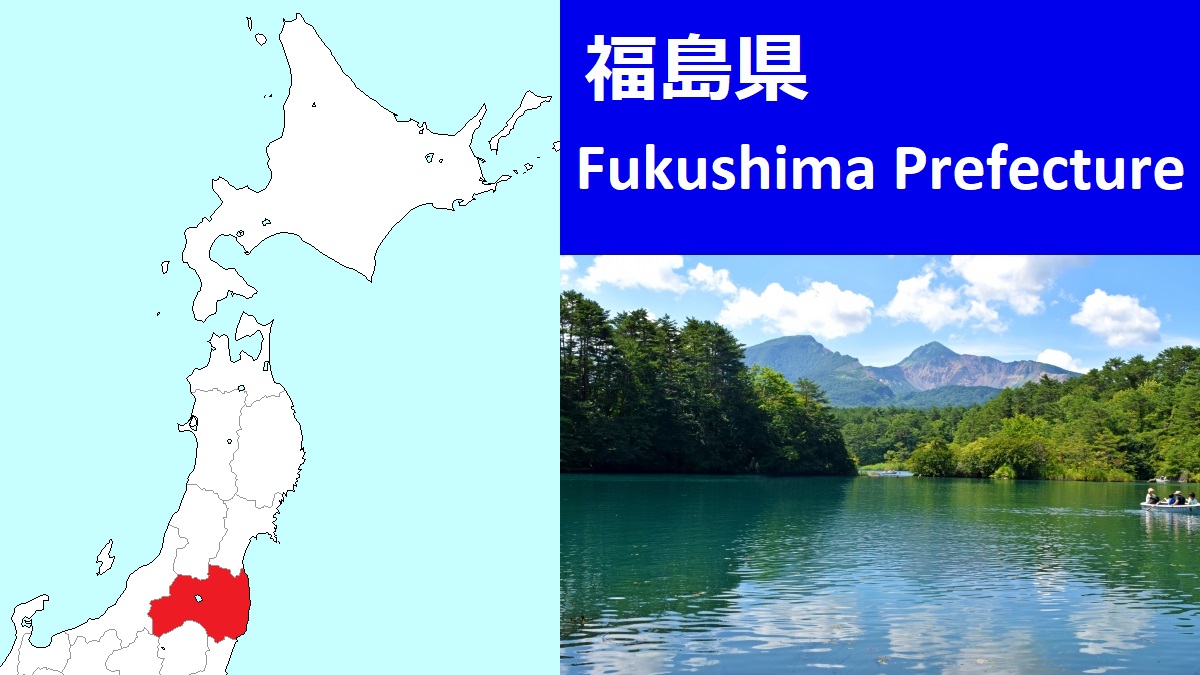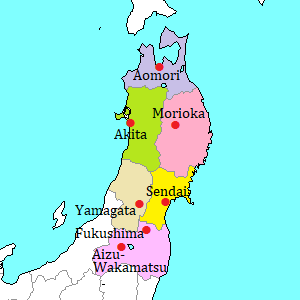Fukushima Prefecture [福島県]
Fukushima Prefecture is at the south part of Tohoku Region, and is located at nearly center of the east coast of Honshu island.
Fukushima Prefecture is the third widest in Japan after Hokkaido and Iwate Prefecture, and extends east and west.
The area stretches about 160 km from east to west and about 120 km from north to south.
It is broadly divided into three areas.
These are the coast area (Hama-doori) in the eastern part, the central area (Naka-doori) and Aizu area in the western part.
There are Abukuma mountain range with altitudes of about 1,000 meters between Hama-doori and Naka-doori.
Naka-doori area has a main route running through Tohoku Region in the north-south direction.
Therefore, there are some main cities such as Fukushima and Kooriyama in this area.
Tohoku-shinkansen also runs through this area.
Aizu area covers the western half of the prefecture, and is mostly mountainous.
Each area has independent regionality.
Main industry of Fukushima Prefecture is agriculture.
Especially, it has been known as a production area of fruits.
The production volume of peach, apricot and apple is one of the largest in Japan.
Additionally many manufacturing factories are built in this prefecture because of good geographic location from Tokyo metropolitan district.
The coastline in Hama-doori was damaged by giant tsunami after the great earthquake on March 11, 2011.
And the tsunami destroyed Fukushima nuclear plant located at the north part of the coastline of this prefecture.
About the accident, please check the following page.
Current radiation measurement in Fukushima Prefecture is shown in the following site.
Unfortunately, "Fukushima" has become a byword for radioactive contamination.
In fact, the northwest area to the plant has been mainly radioactively-contaminated within 20 to 30 km.
But most areas in Fukushima except around nuclear plant has already been nearly normal level of radiation because of the decontamination work and natural attenuation.
So, the number of tourist to Fukushima has returned to the days before tsunami.
You shouldn't miss the interesting spots in Fukushima Prefecture.
Please check the following site.
Tourist Attractions in Fukushima Prefecture
Transportation
Railway
- To Kooriyama from Tokyo : By Tohoku Shinkansen, 1 hour and 20 minutes.
- To Fukushima from Tokyo : By Tohoku Shinkansen, 1 hour and 35 minutes.
- To Aizu-Wakamatsu from Kooriyama : By JR Ban-etsu West Line, 1 hour and 10 - 20 minutes.
Express bus
- To Fukushima from Tokyo : about 5 hours.
Airport
Fukushima airport is located about 20 km south of Kooriyama city.
By route bus, it takes 40 minutes from JR Kooriyama station.
It has the domestic flights from Itami (Osaka) and Shin-Chitose (Sapporo).
Main events in Fukushima Prefecture
Sôma Nomaoi (3 days from last Saturday in May)
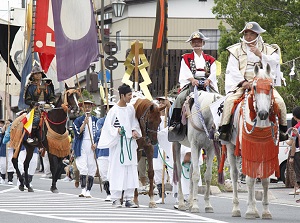
Photo by Fukushima Prefecture
Sôma Nomaoi is the festival reenacted an ancient cavalry action, and it is held for three days in Sôma city.
(Originally, it had been held on July 23-25, but it is held in May from 2024 to avoid severe heat in summer.)
Many men in ancient armor and more than 500 horses join this festival.
It is said that the festival has begun around 940 when a warlord Masakado Taira performed the military training with wild horses.
A few cavalry groups leave from each Shinto shrine.
They march through the city and gather at Hibarigaoka field, which is the main venue for this festival.
Some reenactments of battles and races by cavalries are performed there.
Sôma city is located about 30 km north from the nuclear plant which caused the accident.
So, this festival has been canceled from 2011 to 2017, and revived in 2018.
Nihonmatsu Chochin Festival (October 4 - 6)
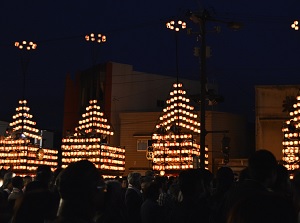
Photo by Fukushima Prefecture
Nihonmatsu Chochin Festival is the annual festival of Nihonmatsu Shrine in Nihonmatsu city located about 20 km south of Fukushima city.
It is said that the festival began in 1643 when Mitsushige Niwa who was the lord of Nihonmatsu area built the shrine for citizens.
"Chochin" means "Japanese paper lantern".
Seven floats with over 300 chochins are paraded to the accompaniment of flute and drum music.
Local foods and products in Fukushima Prefecture
Kitakata ramen
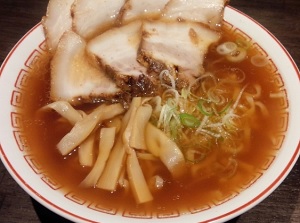
Kitakata ramen is one of the three major ramens together with Sapporo ramen and Hakata ramen.
There are about 120 ramen restaurants in small Kitakata city.
Around the 1920s, a Chinese cook served the ramen at his stall in this city.
It became popular for the people, then many cooks learned the know-how for cooking.
Recently, many tourists to Kitakata introduced it throughout Japan, then it became very famous.
The noodle is curly.
The clear soup is generally made of pork bone broth and shoyu (soy sauce).
And a few slices of barbecued pork are surely topped.
Miharugoma
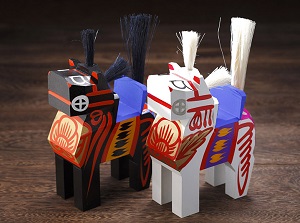
Photo by Fukushima Prefecture
Miharugoma is the woodcarving horse made in Miharu town in the suburb of Kooriyama city.
This town has a legend.
When a warlord in the 8th century had hard battle against the northern country, a wooden horse appeared from somewhere.
Then he won the battle.
Since that, people had made woodcarving horses, wishing for the healthy growth of the foal.
Later, a burinist gave his works to the children in the village, then all children had grown up healthy.
Now, Miharugoma is a charm for growth of a child and long life.
Akabeko
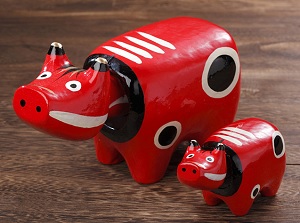
Photo by Fukushima Prefecture
Akabeko is a folk toy in Aizu area.
"Akabeko" means "red ox" in the Tohoku dialect.
In 807, the people in a village had carried many timbers for building new temple from the mountains.
At that time, many oxen appeared, and they helped the people to work.
The work was very hard, then most oxen had broken down.
But only a red ox had followed out.
So, it is said that the people made Akabeko as a mascot.
Akabeko is the papier-mache toy, and the head swings to the touch.
Aizu lacquerware
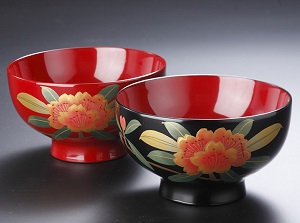
Photo by Fukushima Prefecture
Aizu lacquerware is the popular lacquerware creating in Aizu area.
It has created since the late 16th century.
Therefore, it has a longer history than famous Wajima lacquerware.
There are various techniques to create the work, and it uses various kinds of wood.

